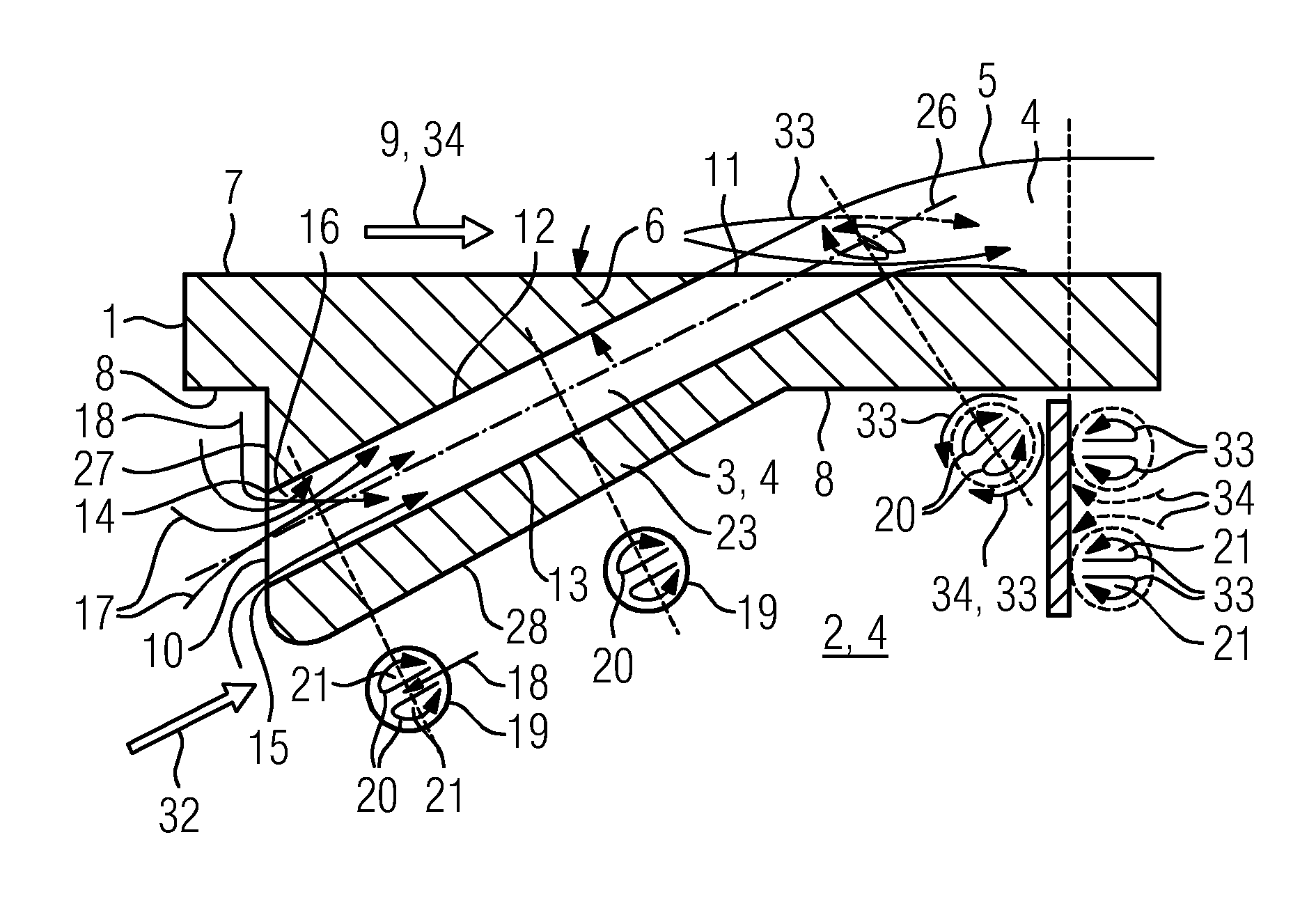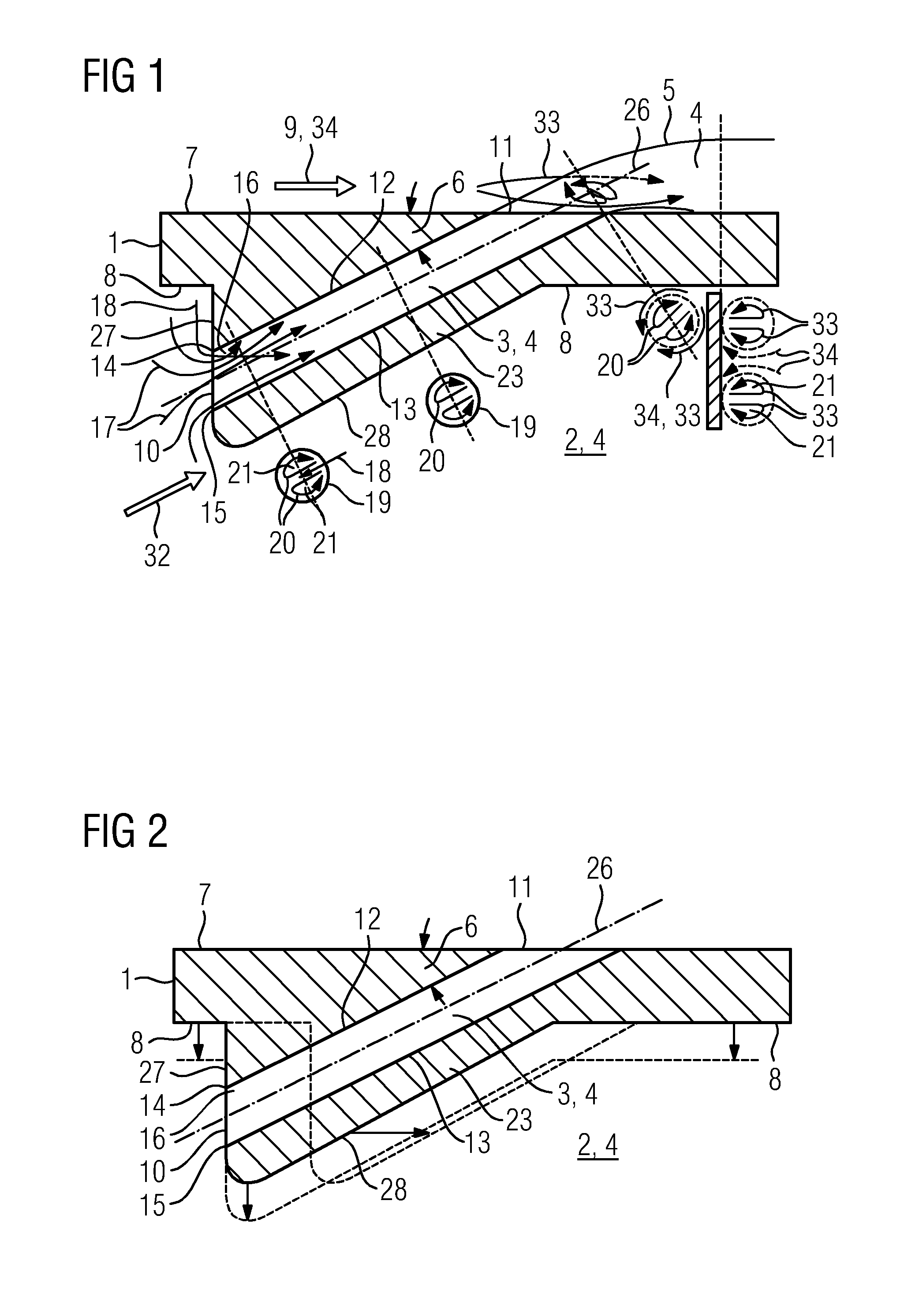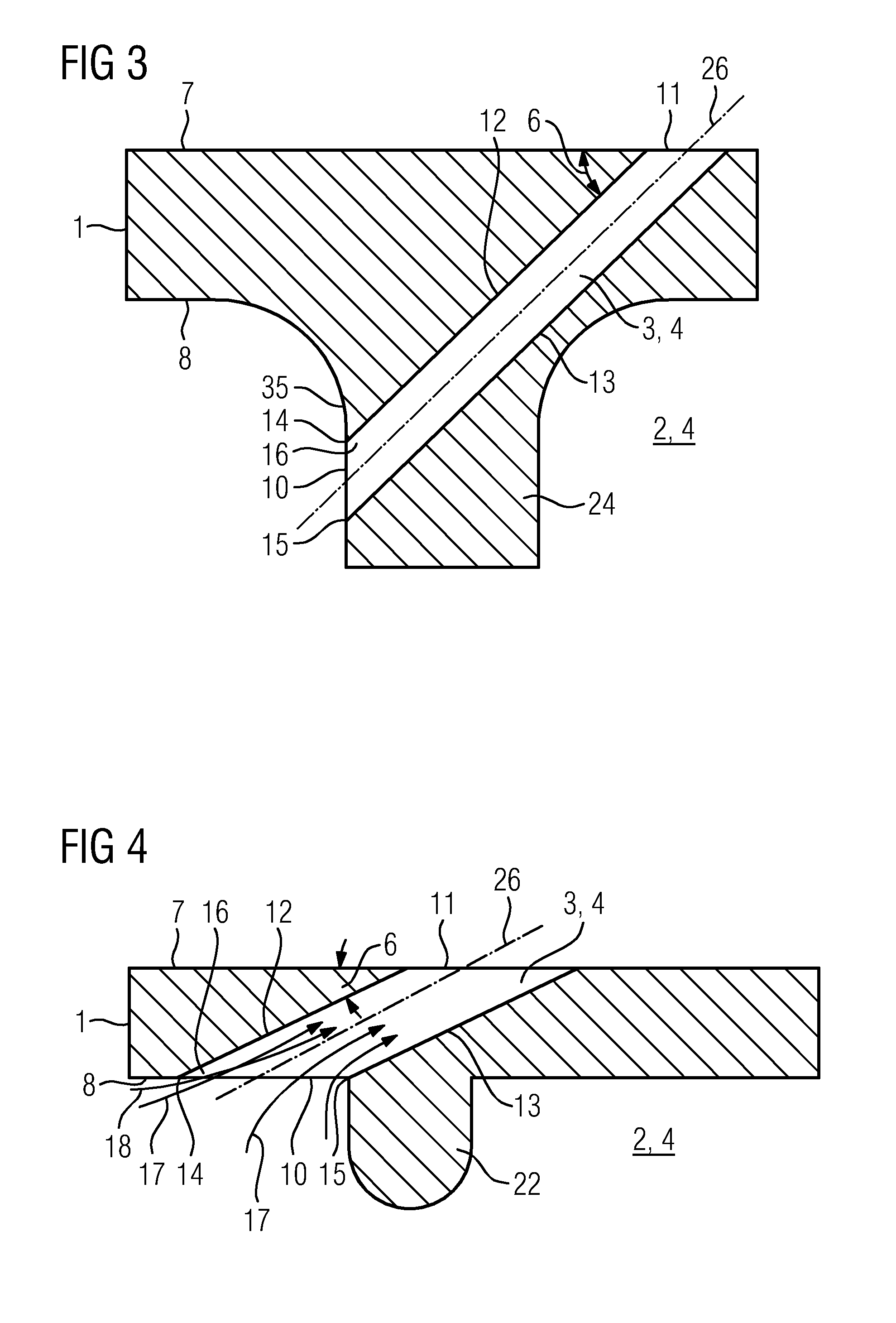Film-cooled turbine blade for a turbomachine
a technology of turbine blades and turbine blades, which is applied in the direction of liquid fuel engines, vessel construction, marine propulsion, etc., can solve the problems of low thermal load of turbine blades, inadequate utilization of the potential to increase the thermal efficiency of gas turbines, and the turbine blade itself is exposed to lower thermal load than. , to achieve the effect of low demand for material for producing turbine blades
- Summary
- Abstract
- Description
- Claims
- Application Information
AI Technical Summary
Benefits of technology
Problems solved by technology
Method used
Image
Examples
Embodiment Construction
[0019]FIGS. 1 to 6 show a portion of an outer wall 1 of a turbine blade of a turbomachine. The outer wall 1 delimits an inner cavity 2 and has an outer face 7 and an inner face 8. When the turbomachine is in operation, a hot gas flow 34 occurs on the outer face 7, with a hot gas main flow direction 9 which is parallel to the outer face 7 and which is directed toward the trailing edge of the turbine blade (not shown in the figures). A through duct 3 of circular cross section 19 is introduced into the outer wall 1 and is inclined with respect to the trailing edge of the turbine blade in the through-flow direction directed from the inside outward and forms an acute inclination angle 6 with the outer face 7.
[0020]The through duct 3 in FIGS. 1 to 6 has an entrance 10 on the inside and an exit 11 on the outside. Furthermore, the through duct 3 has an axis 26, an upstream side 12 and a downstream side 13. The entrance 10 of the through duct 3 has an upstream marginal portion 14 on the upst...
PUM
 Login to View More
Login to View More Abstract
Description
Claims
Application Information
 Login to View More
Login to View More - R&D
- Intellectual Property
- Life Sciences
- Materials
- Tech Scout
- Unparalleled Data Quality
- Higher Quality Content
- 60% Fewer Hallucinations
Browse by: Latest US Patents, China's latest patents, Technical Efficacy Thesaurus, Application Domain, Technology Topic, Popular Technical Reports.
© 2025 PatSnap. All rights reserved.Legal|Privacy policy|Modern Slavery Act Transparency Statement|Sitemap|About US| Contact US: help@patsnap.com



